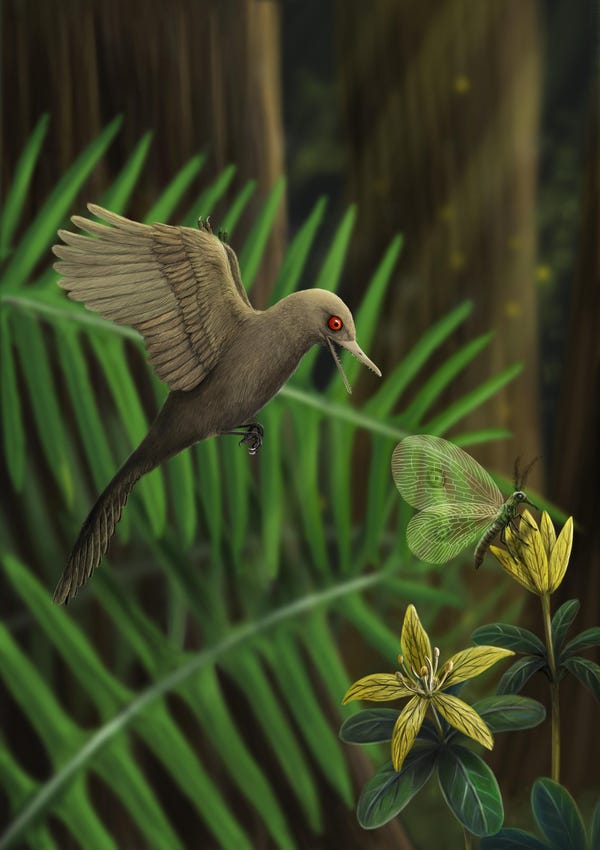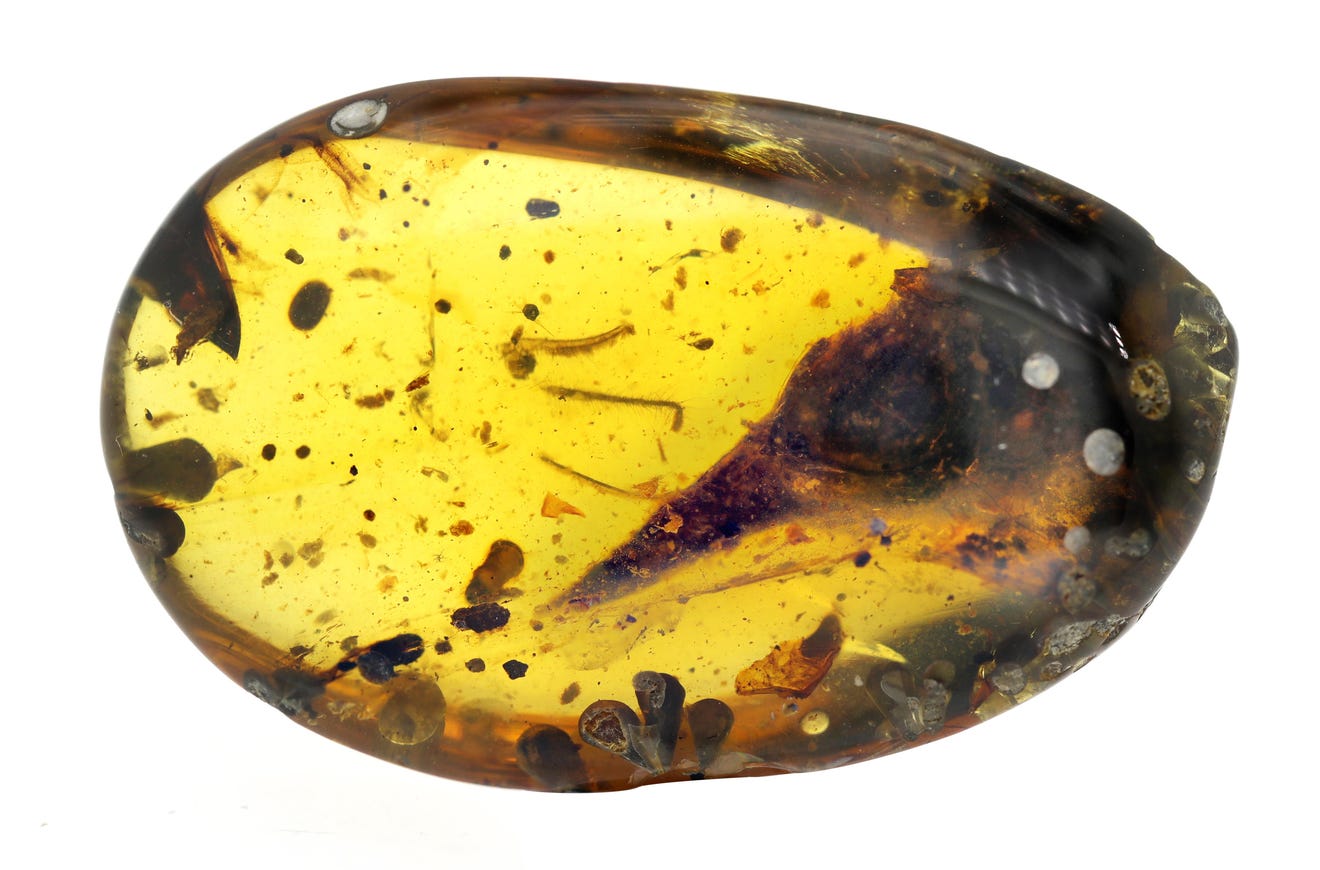New species of tiny 'bird-dinosaur' discovered trapped in 99-million-year-old amber
Doyle Rice USA TODAY
It's one of the most ancient birds yet reported.

The bird's upper and lower jaws contain a large number of sharp teeth.
Despite its small size, this finding suggests Oculudentavis was a predator.
A new species of a bird-like dinosaur that lived 99 million years ago has been identified from a fossilized skull trapped in a block of amber, a study said.
Even tinier than a hummingbird, it's among the smallest dinosaurs from the Mesozoic Era yet found. It's also one of the most ancient birds ever reported.
"When I first saw it, I was blown away," Jingmai O'Connor, a paleontologist from the Chinese Academy of Sciences and lead author of the study, told AFP.
“Amber preservation of vertebrates is rare, and this provides us a window into the world of dinosaurs at the lowest end of the body-size spectrum," said study co-author Lars Schmitz, a biologist at the W.M. Keck Science Department in California, in a statement.
The skull specimen, which was discovered in a mine in northern Myanmar, is only about 1/2 inch in length. The entire bird weighed less than a tenth of an ounce, scientists estimate. ![]()
The animal was given the scientific name Oculudentavis khaungraae. Oculudentavis means “eye tooth bird,” reflecting notable features that give hints into how the animal lived.
Dinosaur clues:Rocks discovered from the day the dinosaurs died 66 million years ago when an asteroid hit the Earth
The creature's skull is dominated by a large eye socket that's similar to a modern lizard’s eye. The eye socket has a narrow opening and only lets in a small amount of light, which means that Oculudentavis was suited to being active in daylight conditions.
Its upper and lower jaws contain a large number of sharp teeth and the study authors estimate each jaw would have had 29 to 30 teeth in total.
Despite its small size, this finding suggests Oculudentavis was a predator and likely ate small arthropods or invertebrates, unlike similar-size modern birds, which have no teeth and feed on nectar.
“This is truly one of the rarest and most spectacular of finds!” The University of Central Florida paleontologist Ryan Carney, who wasn’t involved with the study, told National Geographic. “Like capturing Cretaceous lightning in a bottle, this amber preserves an unprecedented snapshot of a miniature dinosaur skull with exciting new features.”

The researchers concluded that the specimen's tiny size and unusual form suggests a never-before-seen combination of features.
"This discovery shows us that we have only a small glimpse of what tiny vertebrates looked like in the age of the dinosaurs," Schmitz said.
The study was published in the peer-reviewed British journal Nature. ![]()
No comments:
Post a Comment